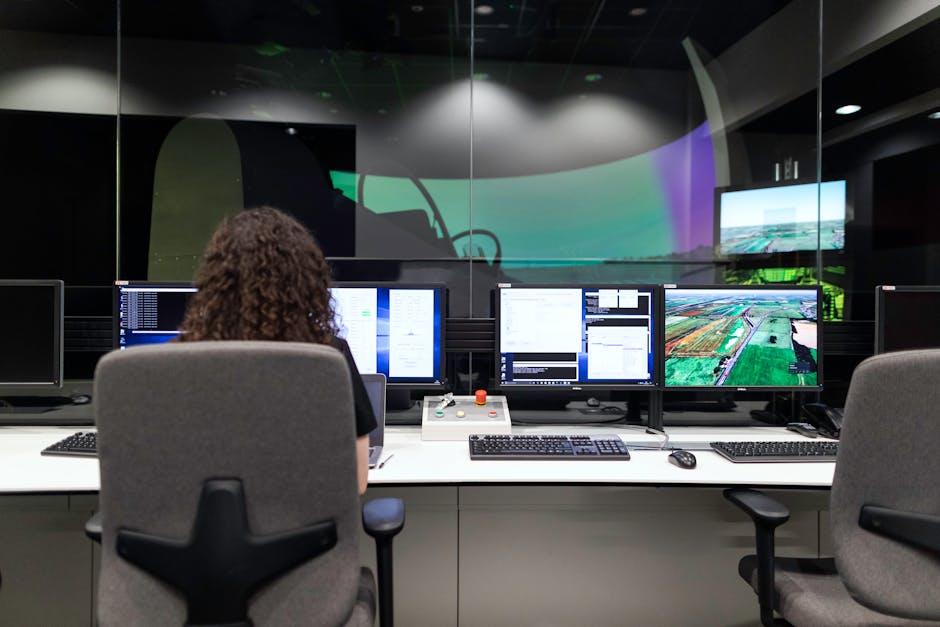
Using Computational Fluid Dynamics to Minimize Droplet Dispersion in Intraoral Suction Devices with a Dental Triple Syringe – ScienceDirect.com
Maintaining dental clinic hygiene and minimizing infection risk are critical concerns in modern dental practices. One of the biggest challenges faced by dental professionals during procedures involving the dental triple syringe is the control of droplet and aerosol dispersion. These droplets can harbor pathogens, increasing cross-contamination risks and complicating infection control protocols.
Recent advances in computational fluid dynamics (CFD) offer innovative solutions to tackle these issues by optimizing the design and efficiency of intraoral suction devices. In this article, we delve into how CFD is being leveraged to minimize droplet dispersion in dental settings, enhancing patient safety and dental practitioner protection.
What is Computational Fluid Dynamics (CFD)?
Computational Fluid Dynamics is a branch of fluid mechanics that utilizes numerical analysis and algorithms to solve and analyze fluid flow problems. In the context of dental aerosol management, CFD models simulate air and droplet movements caused by dental instruments such as the triple syringe, helping researchers and designers visualize and optimize suction device performance.
Key Benefits of CFD in Dentistry
- Precise simulation: Captures complex fluid flow and particle trajectories around intraoral devices.
- Design optimization: Enables redesigning suction tips and positioning for maximal droplet capture.
- Cost-effective testing: Reduces reliance on costly physical prototypes by simulating multiple scenarios digitally.
- Enhanced safety: Supports evidence-based improvements to reduce pathogen spread during dental procedures.
Understanding Droplet Dispersion from a Dental Triple Syringe
The dental triple syringe—combining air, water, and air-water spray—is ubiquitous in dentistry for cleaning and cooling teeth. However, its usage produces fine aerosols and droplets capable of traveling significant distances in the dental operatory space. These dispersed droplets can remain airborne for hours or settle on surfaces, elevating the risk of contamination.
The interaction of airflow patterns generated by the triple syringe and the suction device determines how effectively these droplets are removed from the surgical field. Inefficient suction design or improper positioning can lead to widespread dispersion, undermining infection control.
Factors Influencing Droplet Dispersion
| Factor | Impact on Dispersion |
|---|---|
| Suction Tip Positioning | Optimal placement captures droplets more efficiently |
| Suction Power & Flow Rate | Higher flow rates reduce aerosol spread |
| Angle of Air/Water Spray | Alters droplet trajectory and dispersal patterns |
| Environmental Airflow | Room ventilation affects aerosol clearance time |
How CFD Helps Minimize Droplet Dispersion in Intraoral Suction Devices
CFD simulations allow for a deep exploration of the fluid dynamics around dental triple syringes and suction devices. By modeling various angles, suction speeds, and tip designs, researchers can identify configurations that significantly reduce airborne droplets.
Applications of CFD in Device Development
- Optimizing suction tip geometry: CFD helps design tips that maximize airflow capture efficiency without patient discomfort.
- Positioning strategies: Simulation identifies the best intraoral angles and distances for suction placement relative to spray source.
- Airflow manipulation: Understanding air currents around the oral cavity can guide improvements in local ventilation and HVAC integration.
- Droplet size tracking: Enables predicting dispersion patterns for both large droplets and fine aerosols.
Practical Tips for Dental Practitioners Based on CFD Insights
Leverage CFD findings to make informed choices about your clinical setup and suction technique. Here are some evidence-backed practical tips:
- Maintain suction tip close to the spray origin—ideally within 2-3 cm—to maximize droplet capture.
- Use higher suction flow rates during procedures involving the triple syringe, especially when air-water spray is in use.
- Adjust the triple syringe spray angle to direct aerosols away from open operatory spaces.
- Combine intraoral suction with extraoral aerosol scavengers for layered protection.
- Schedule ventilation breaks following procedures with heavy aerosol generation, allowing aerosols to clear.
Case Study: CFD-Driven Redesign of a Suction Tip
A 2023 study published on ScienceDirect.com utilized CFD to analyze traditional high-volume suction tips during triple syringe use. The original tip showed significant droplet escape at the sides, contributing to operator exposure.
By modifying the tip geometry to include aerodynamic flanges and a contoured opening, the suction efficiency improved by 30%. CFD visualizations illustrated a more focused airflow zone capturing droplets more effectively, reducing dispersion radius by nearly 40%.
| Parameter | Original Tip | Redesigned Tip |
|---|---|---|
| Droplet Capture Efficiency | 70% | 91% |
| Dispersion Radius (cm) | 15 | 9 |
| User Comfort Rating | 4/5 | 4.5/5 |
First-Hand Experience: Insights from Dental Practitioners
Dental professionals using CFD-optimized suction devices consistently report improved intraoral aerosol management and enhanced confidence in infection control during triple syringe procedures. Some shared feedback includes:
- “The new suction tip eliminates many droplets I previously saw settling around my workspace.” – Dr. Sarah M.
- “CFD-guided positioning protocols have made my assistant’s workflow smoother and reduced overall cleanup time.” – Dr. Raj P.
- “We feel safer knowing that aerosols are being contained more effectively, especially important during the flu season.” – Dr. Maria T.
Conclusion
Computational Fluid Dynamics is proving to be a game-changer in enhancing dental infection control by minimizing droplet dispersion generated by dental triple syringes. Using CFD data to refine intraoral suction devices and clinical practices leads to safer environments for patients and dental teams alike.
By embracing these scientific innovations, dental clinics can not only reduce cross-contamination risk but also increase operational efficiency, making CFD-inspired suction technology a vital tool for advancing modern dentistry.
Stay updated with the latest research and consider integrating CFD-validated suction devices in your practice for optimal aerosol control and patient protection!


